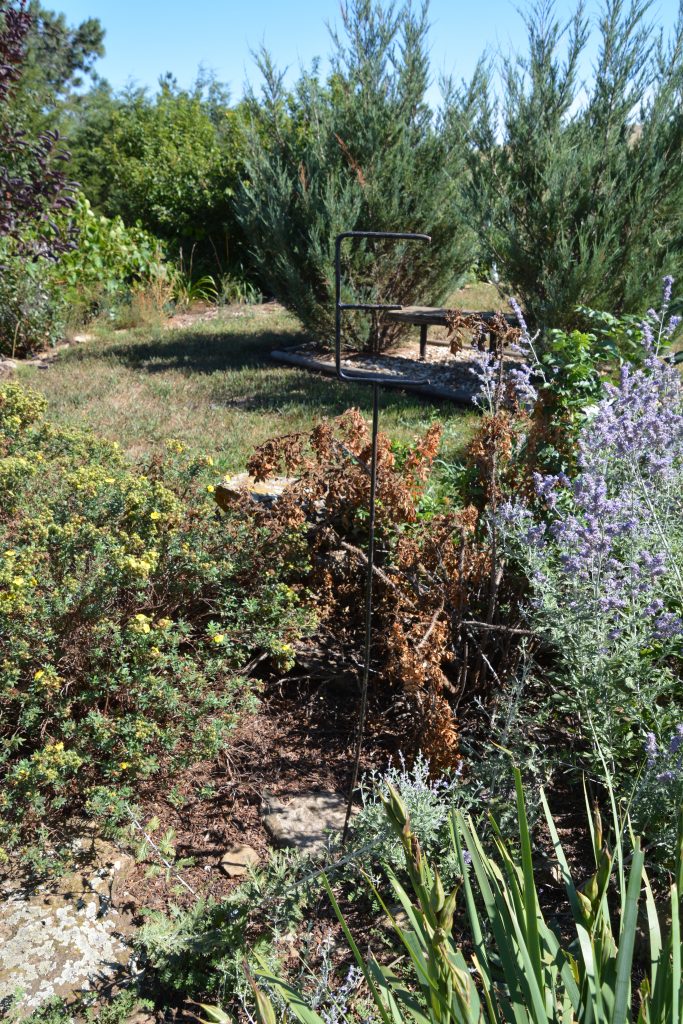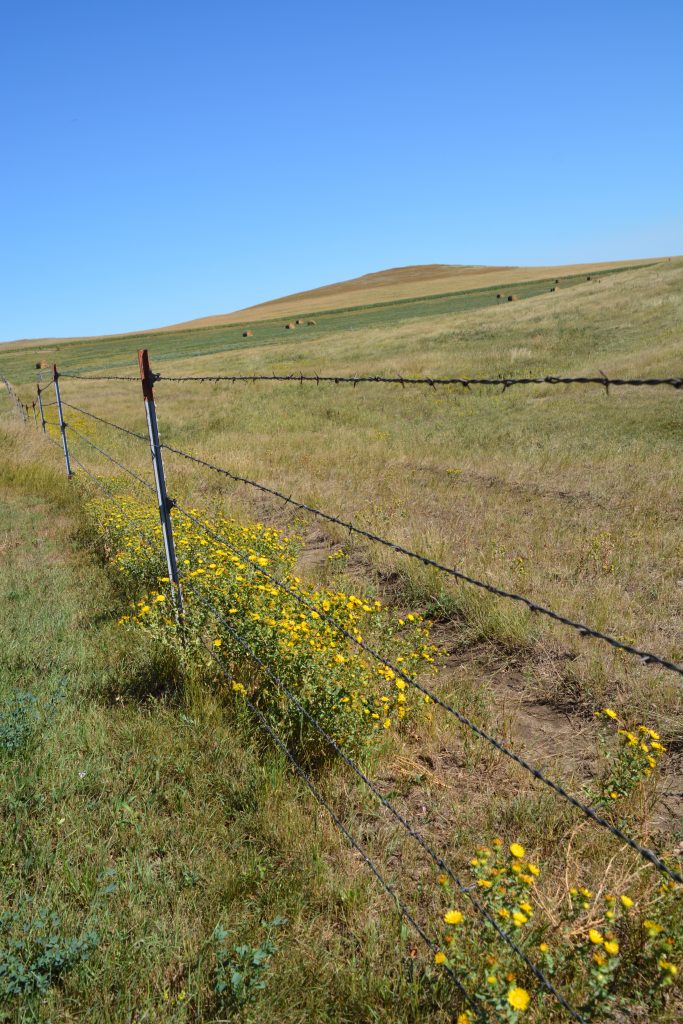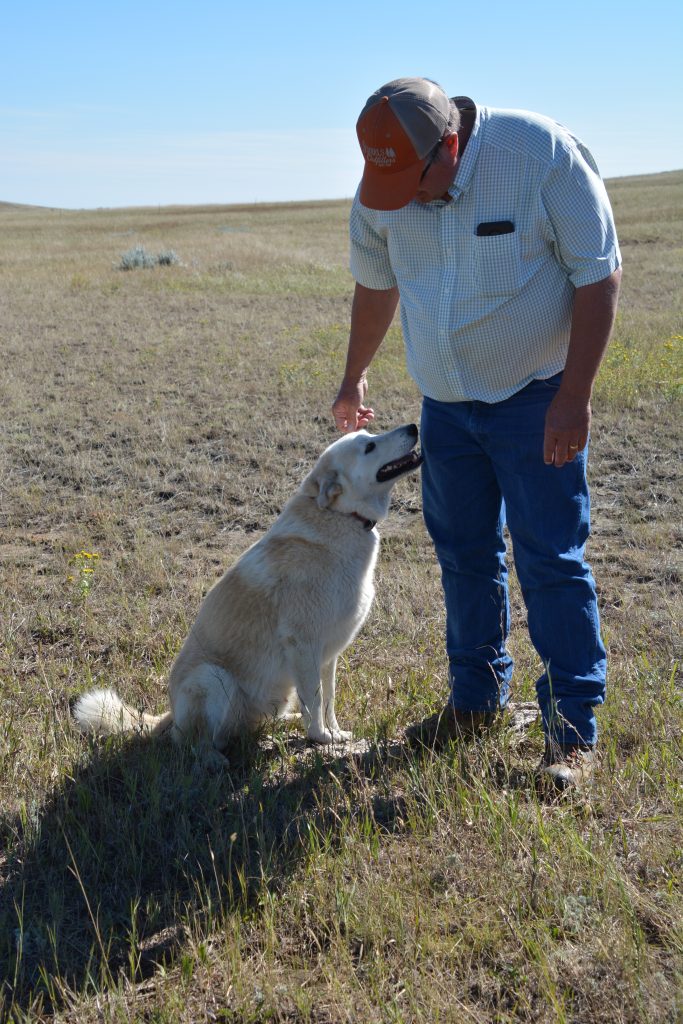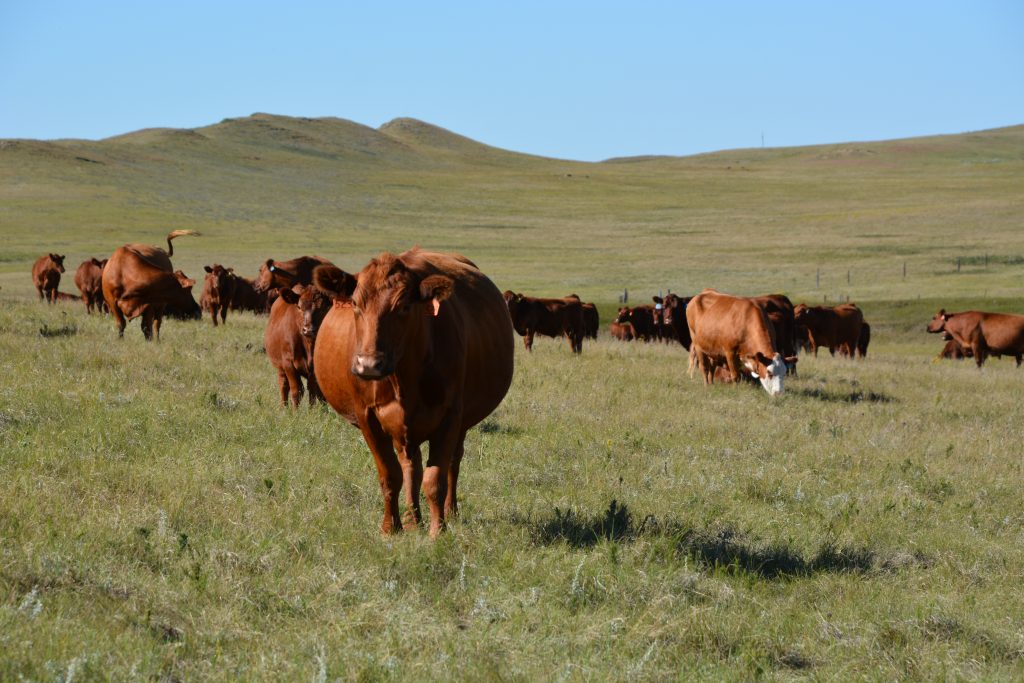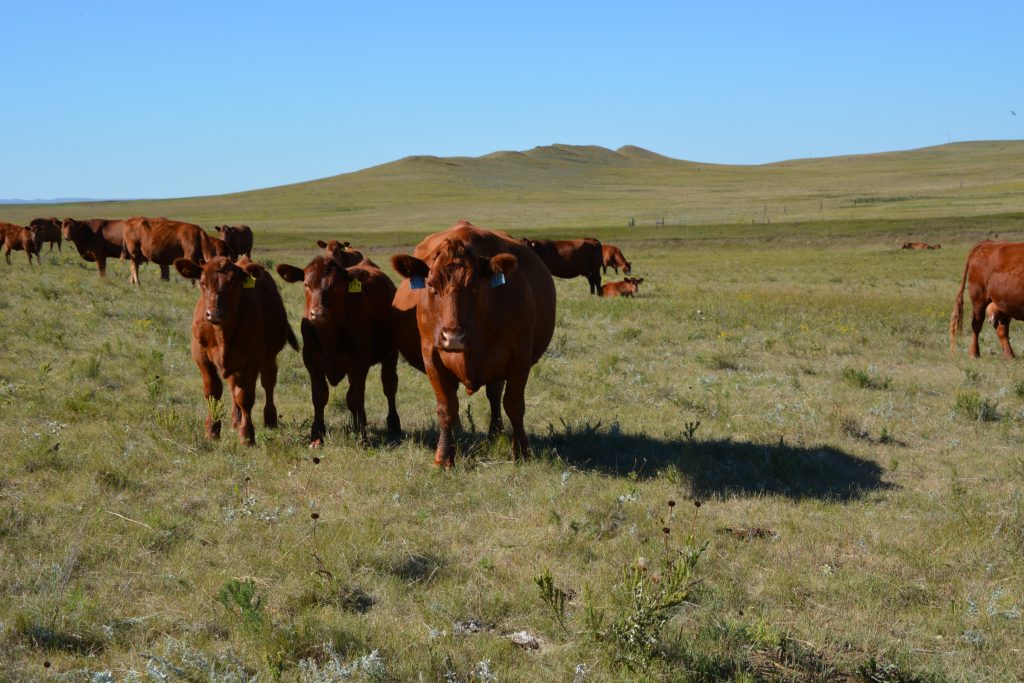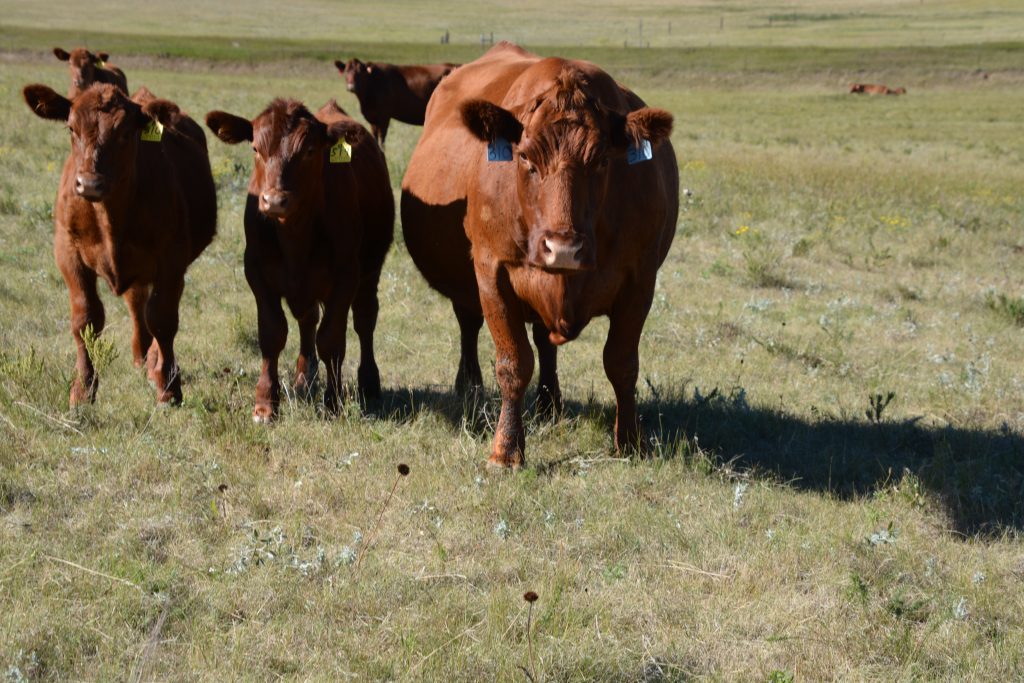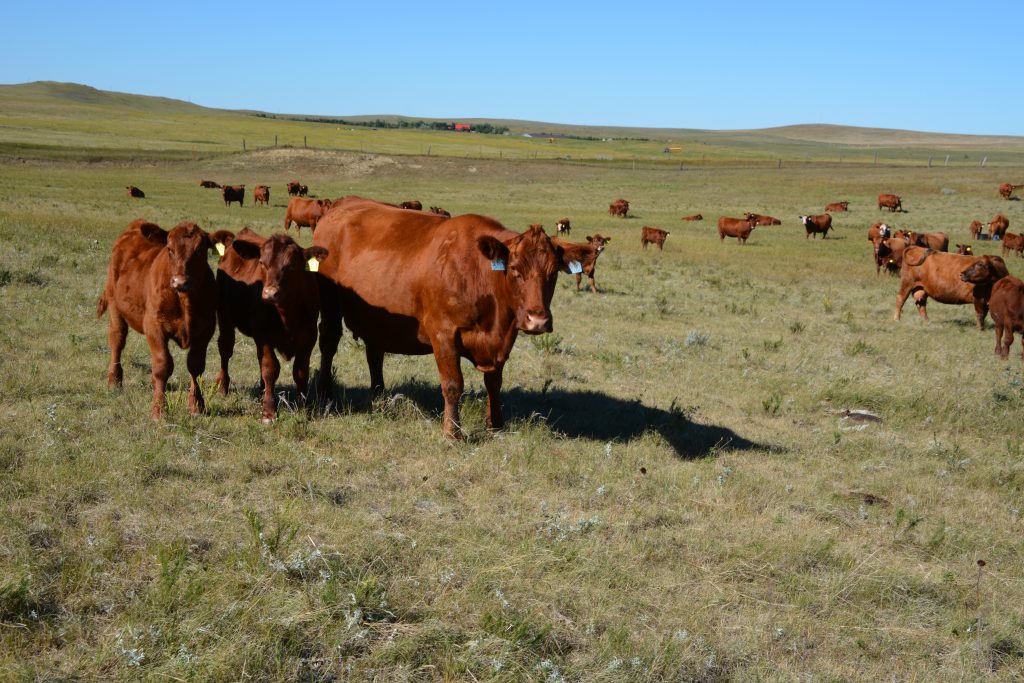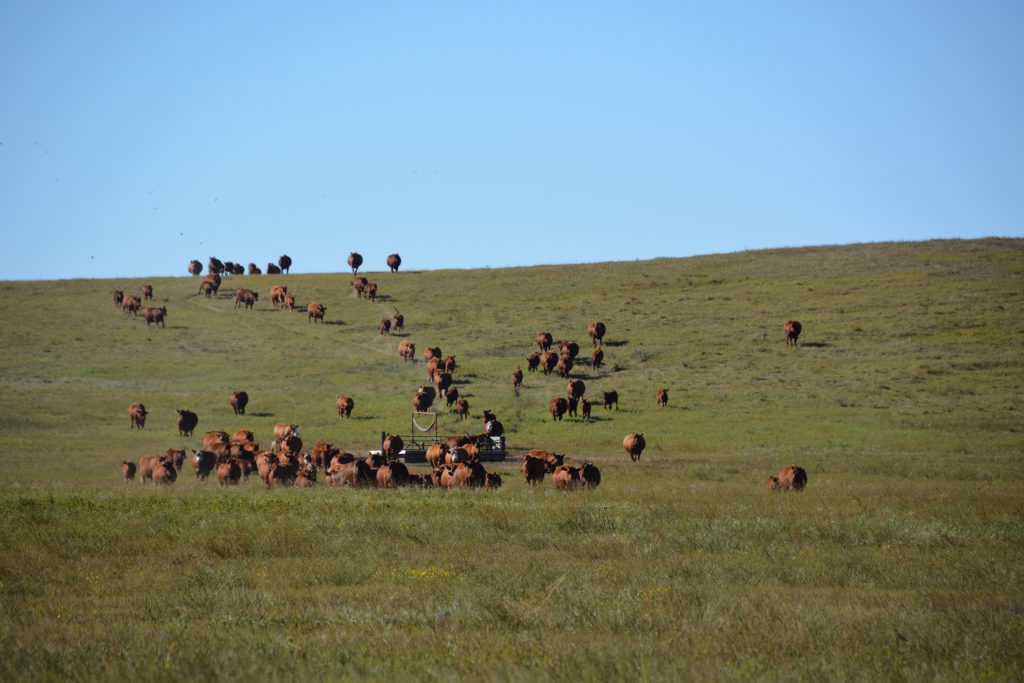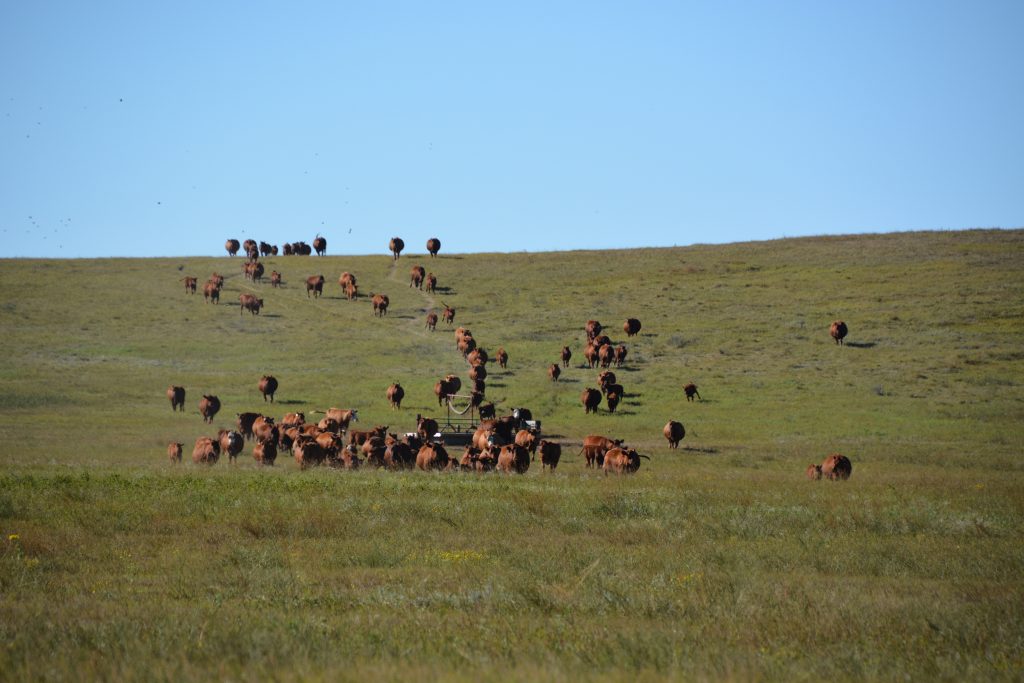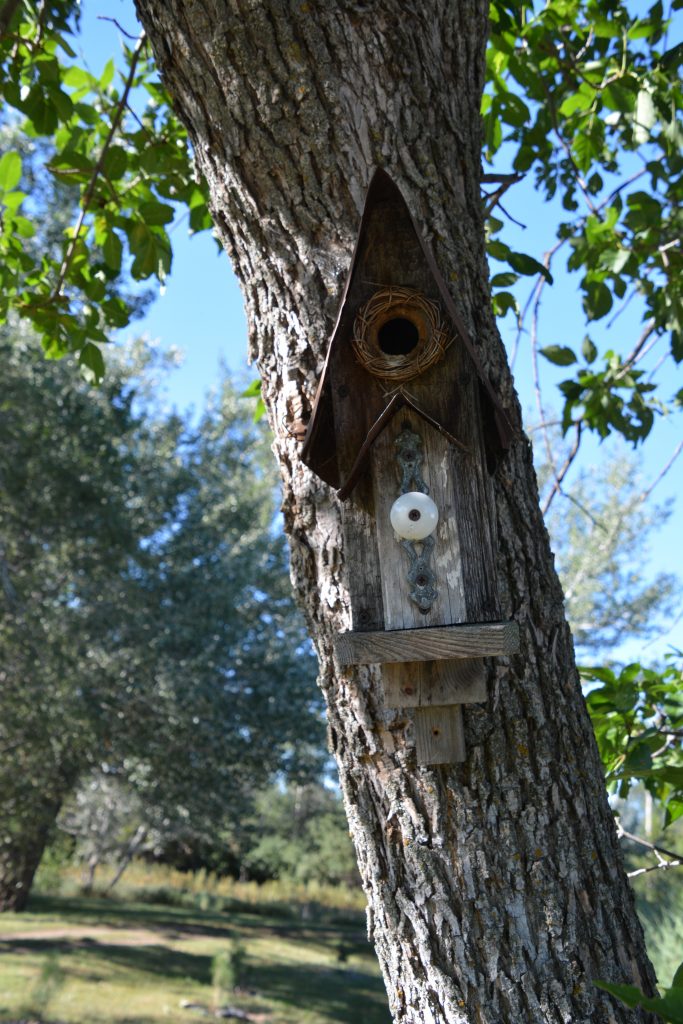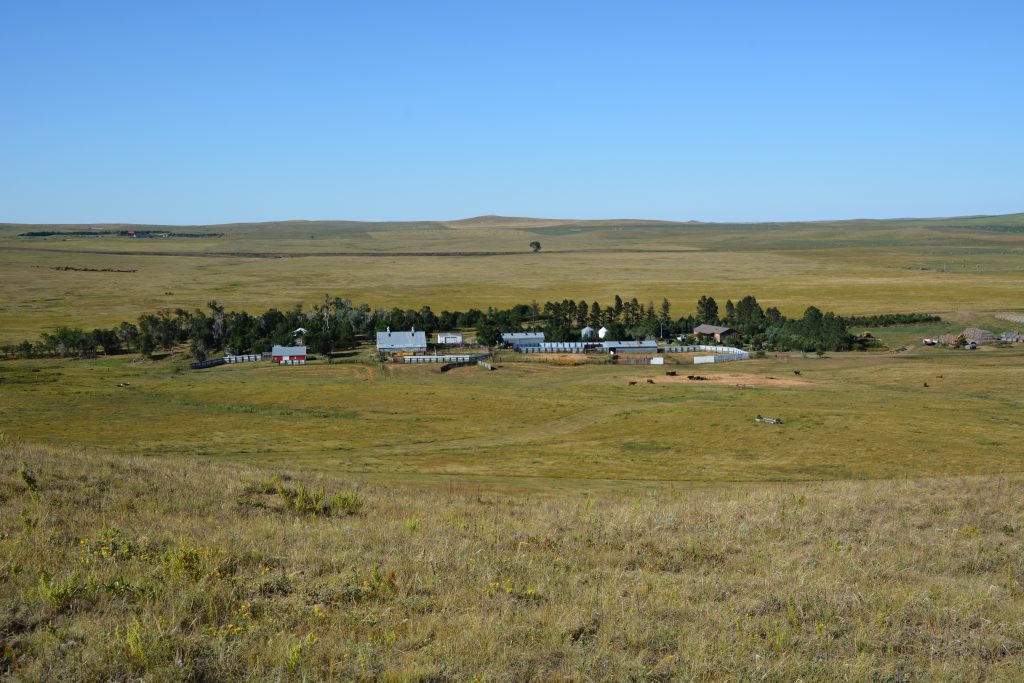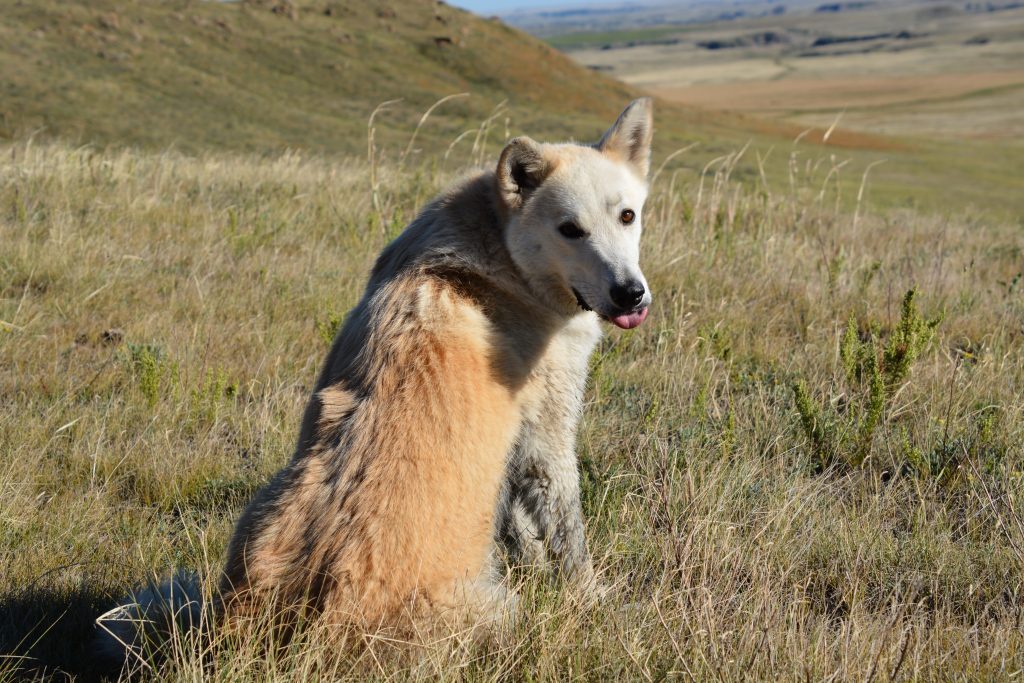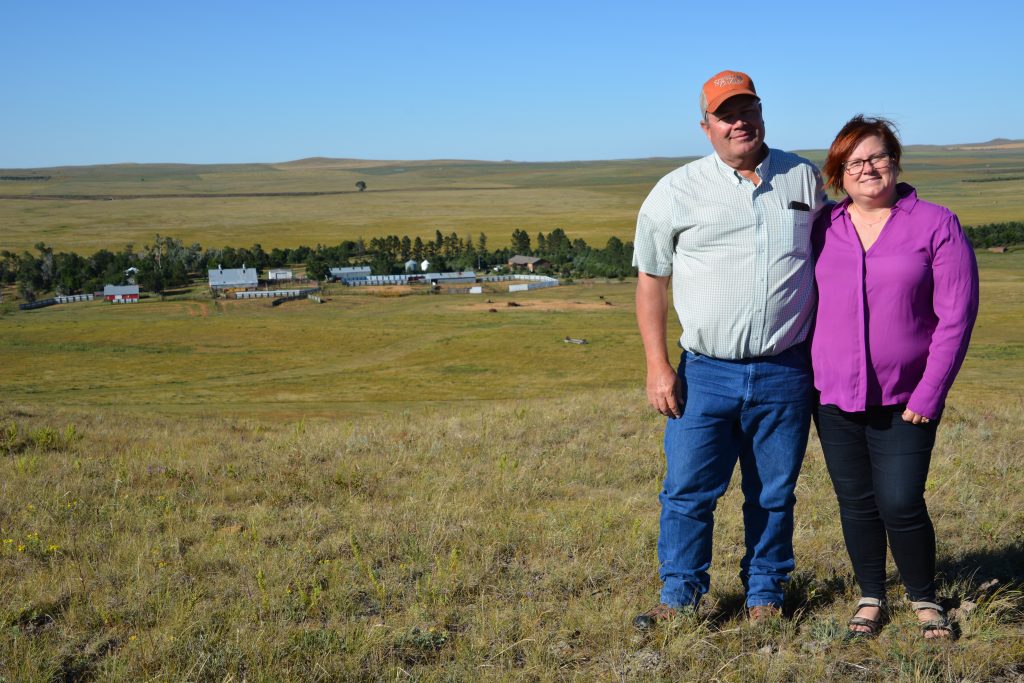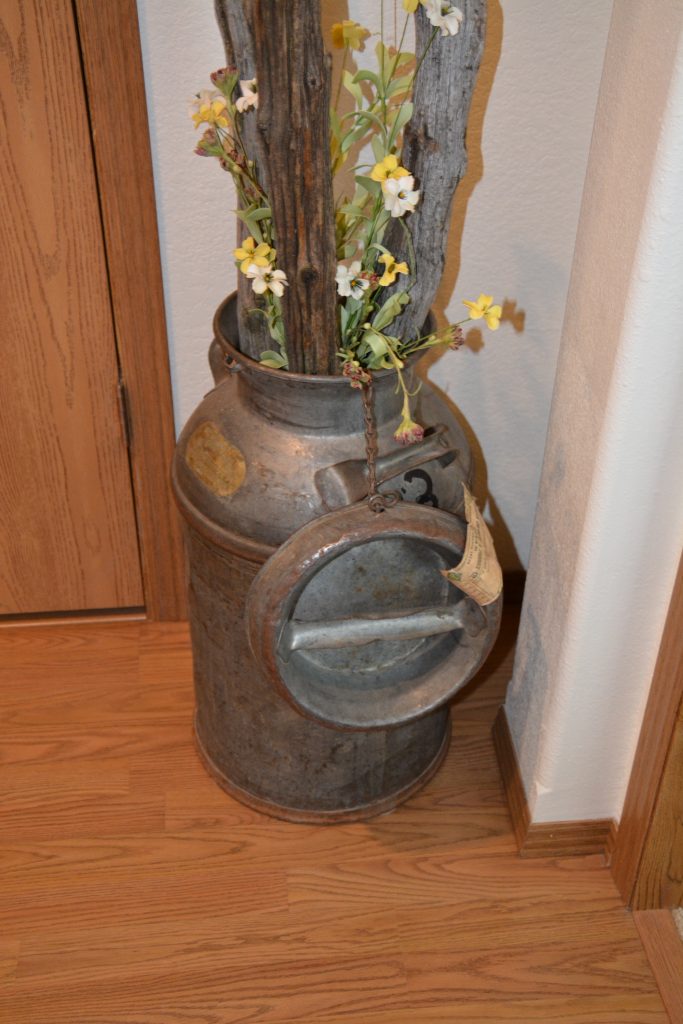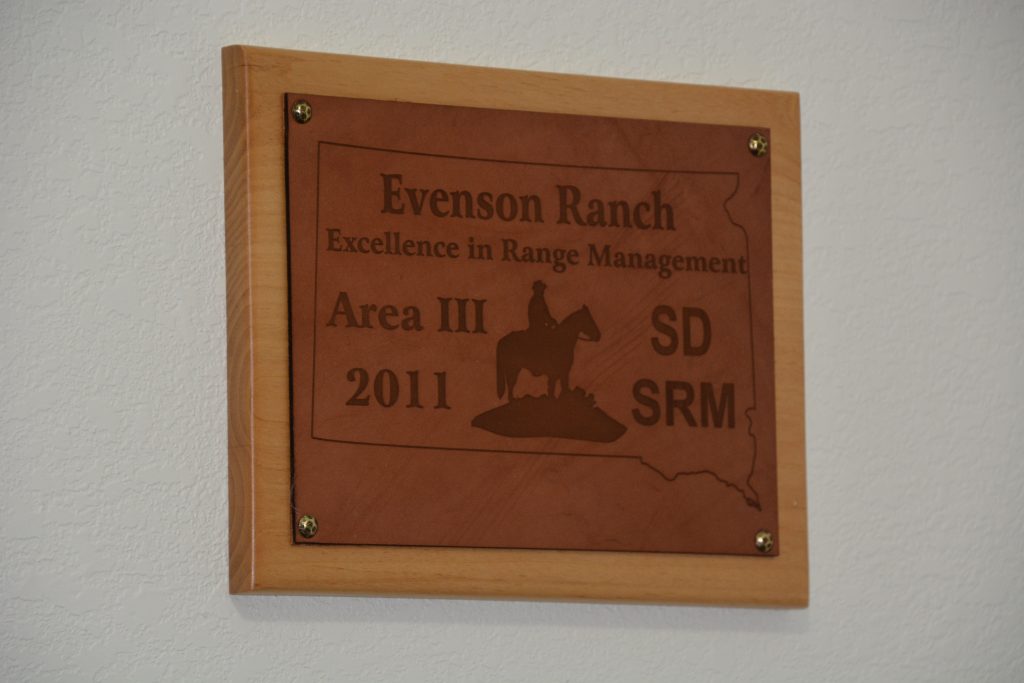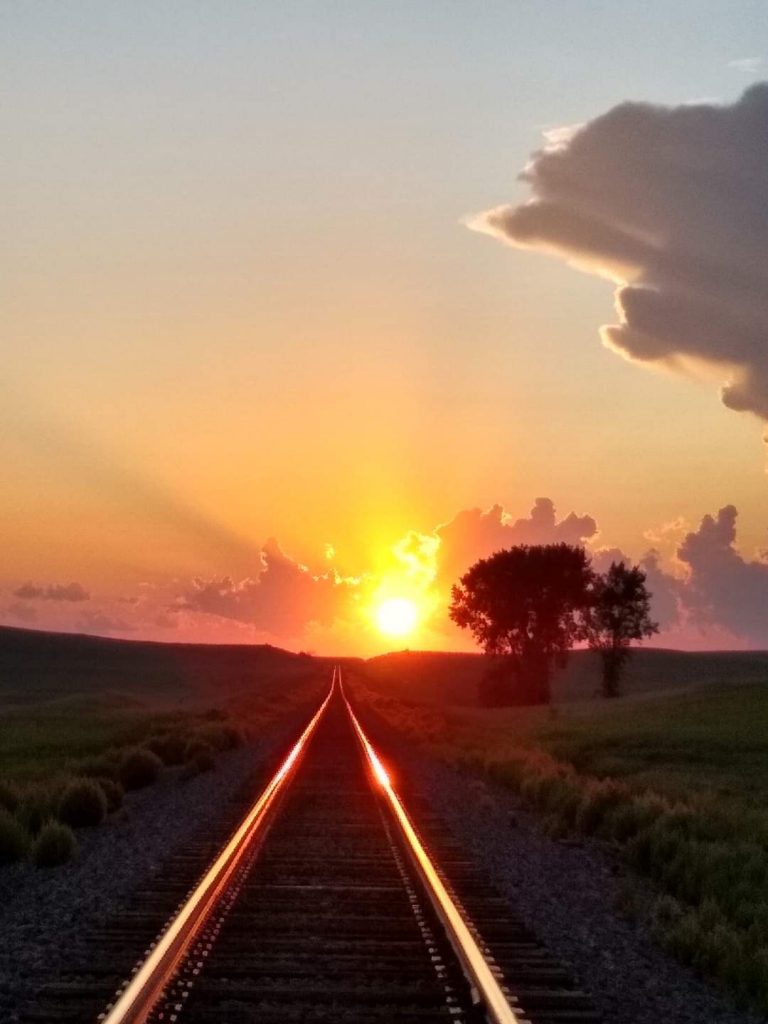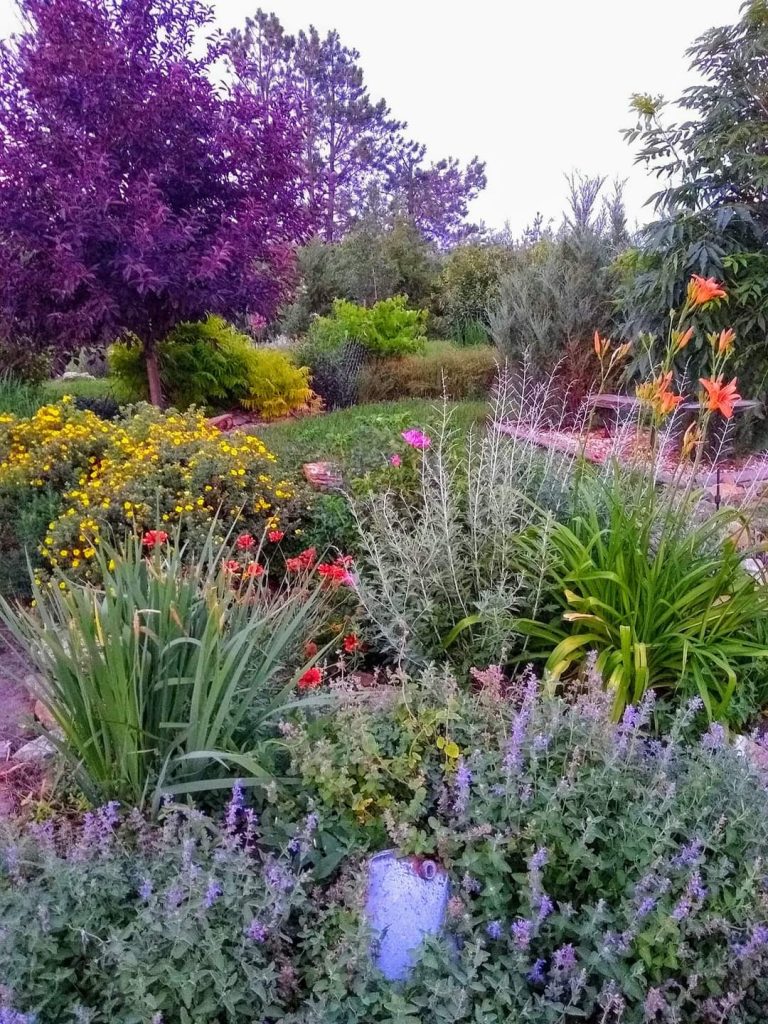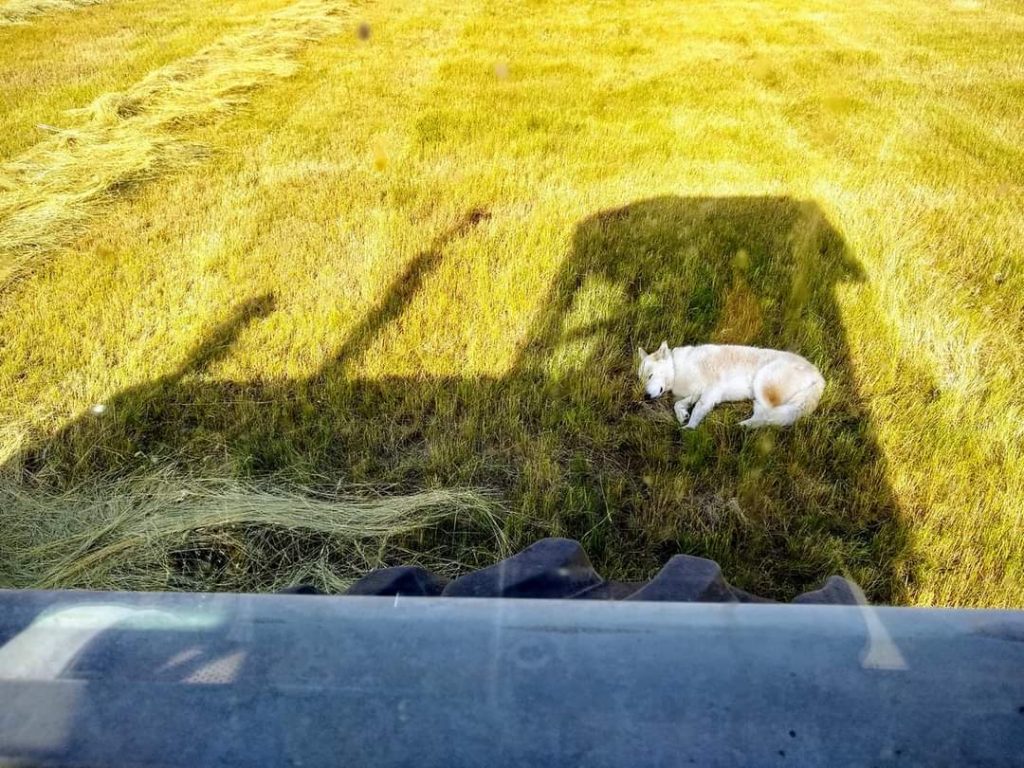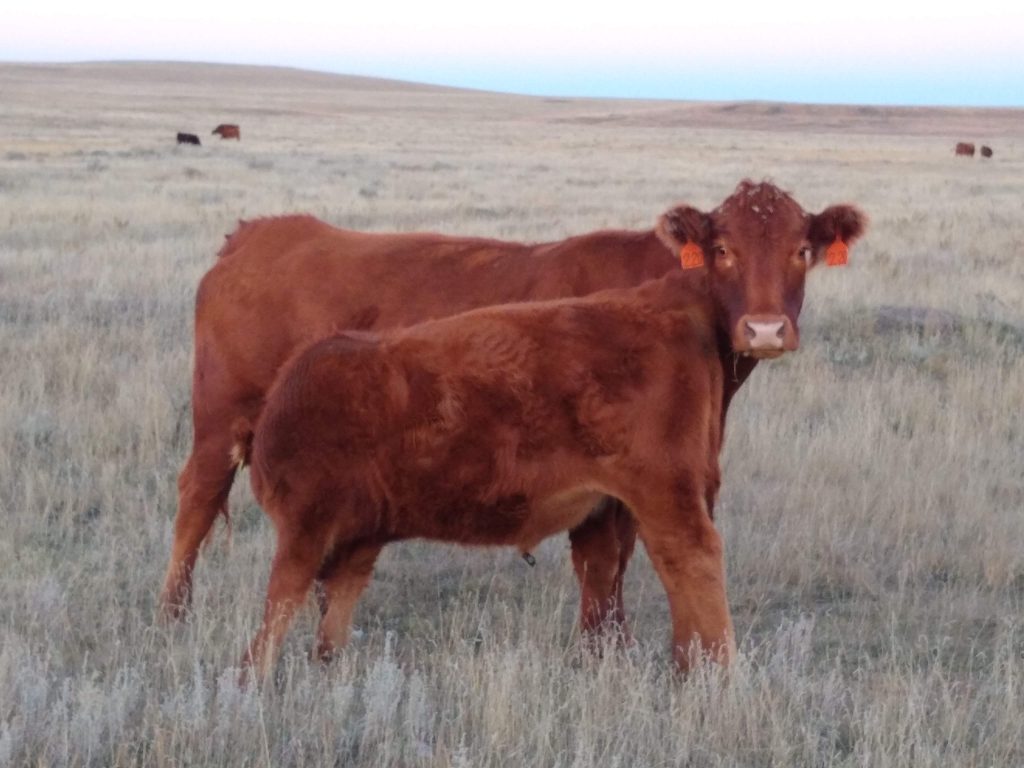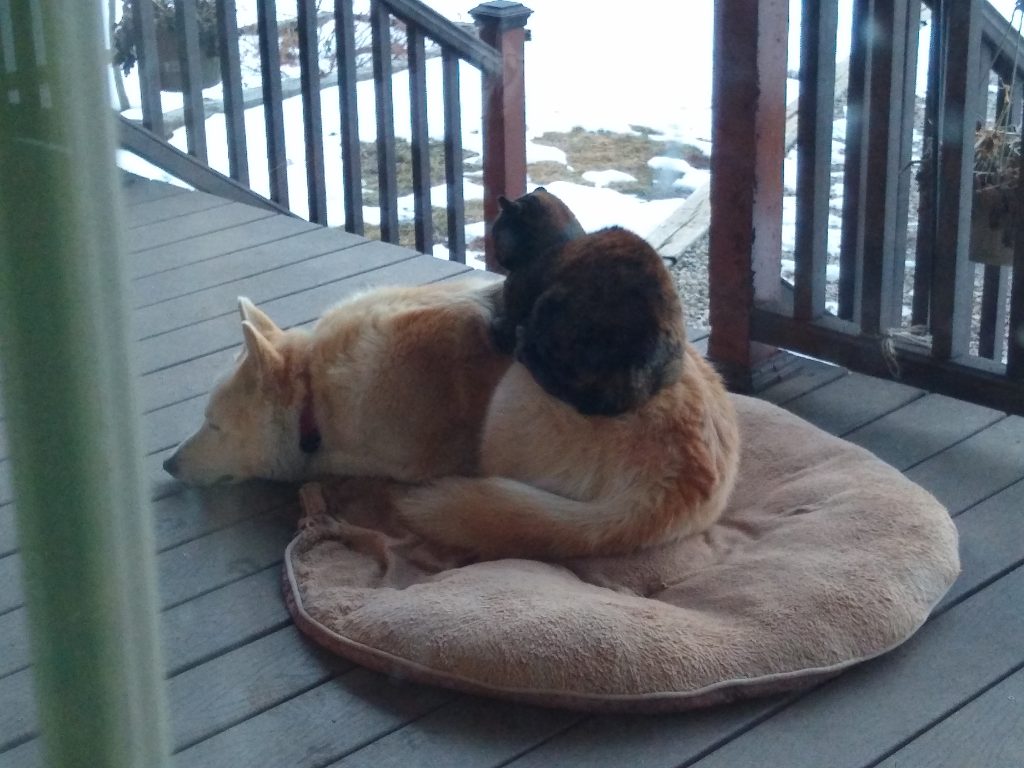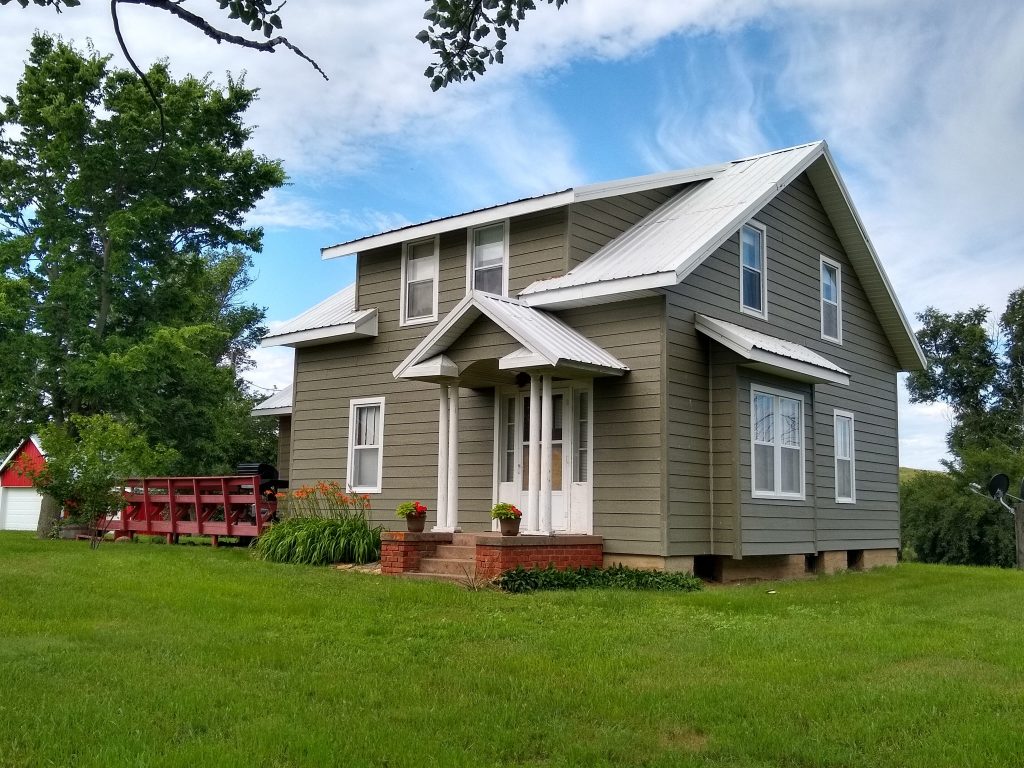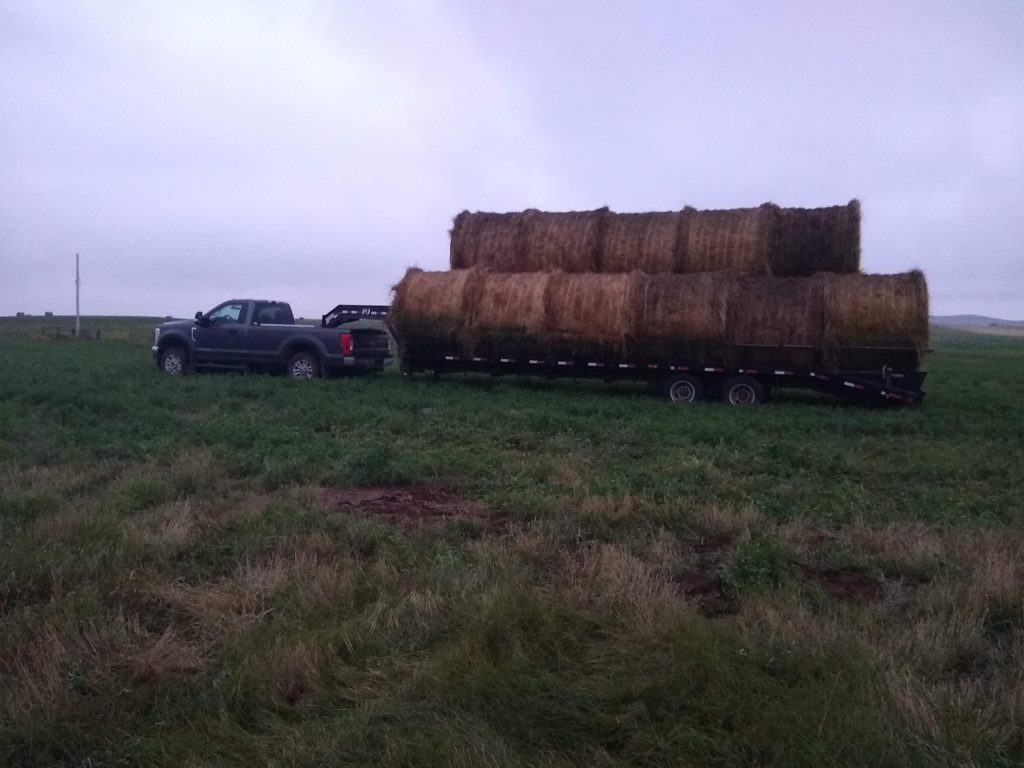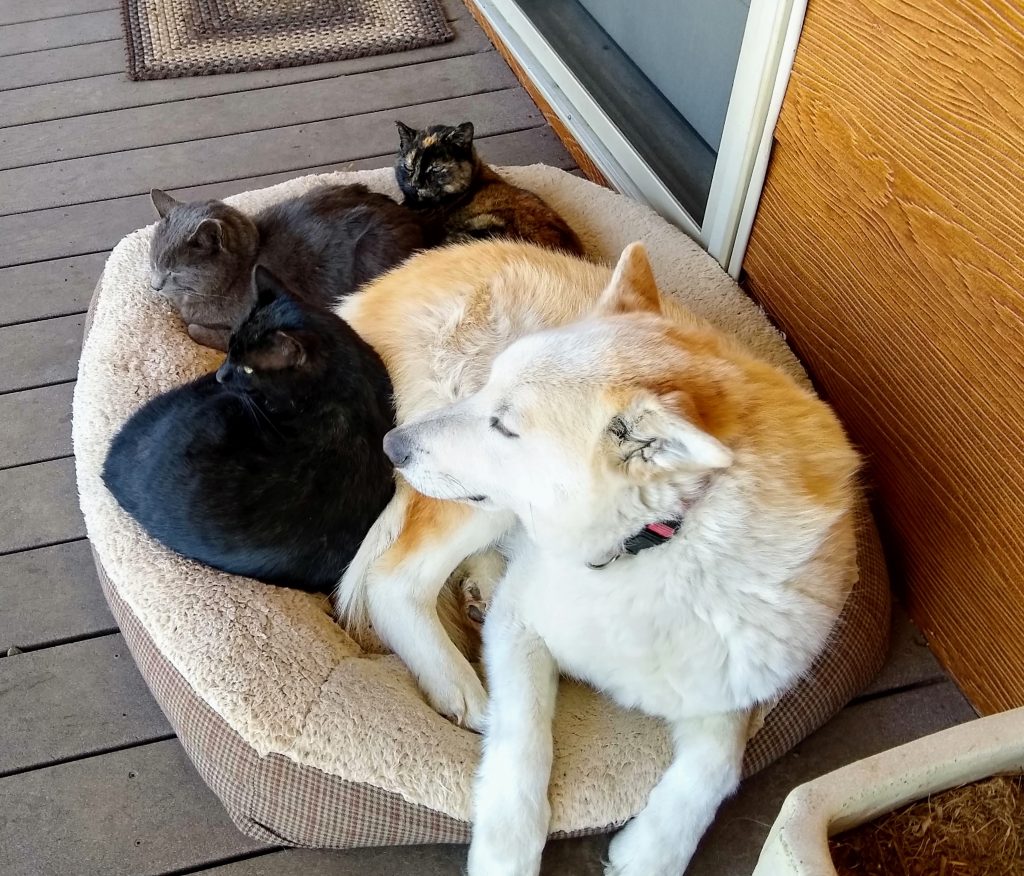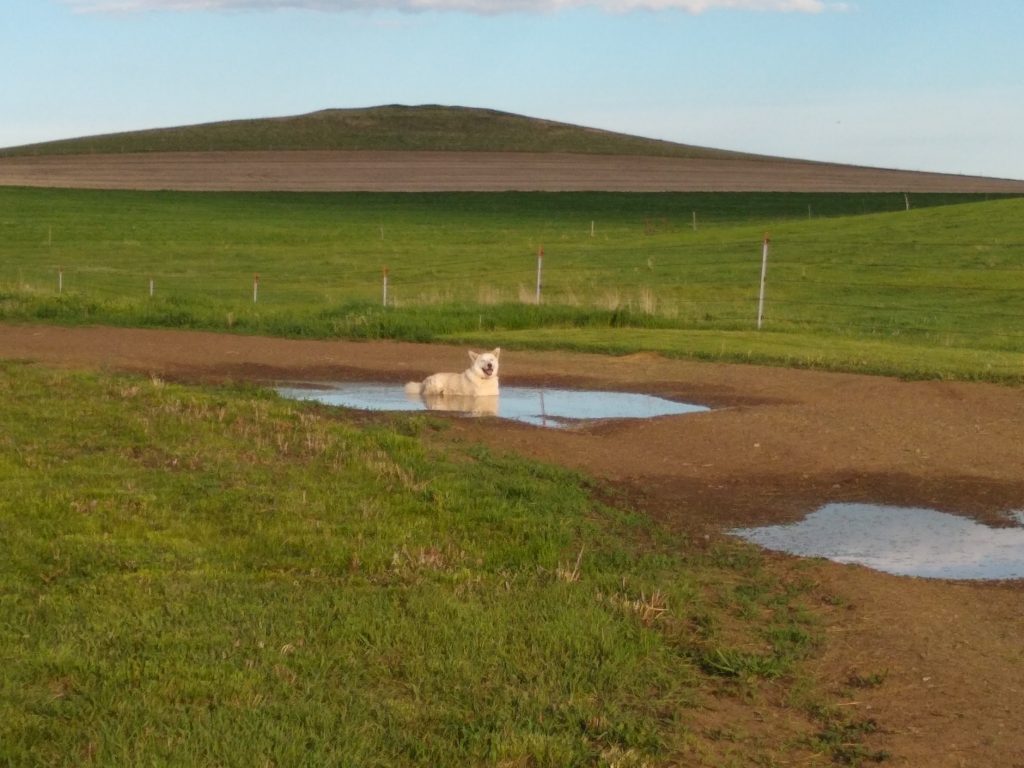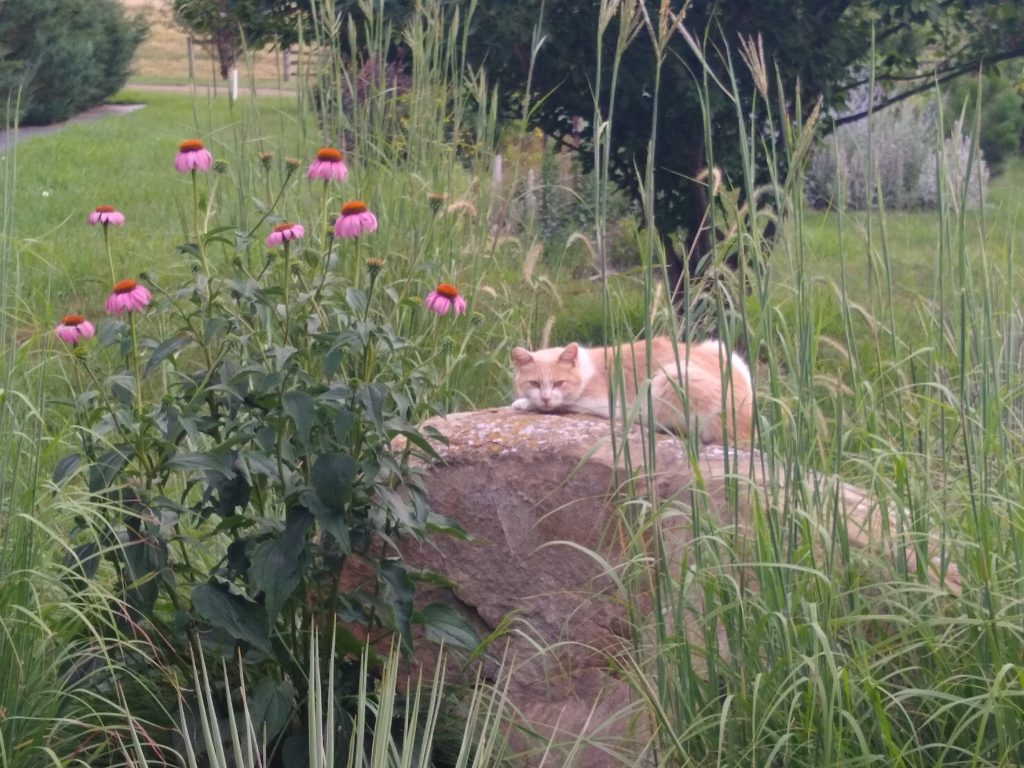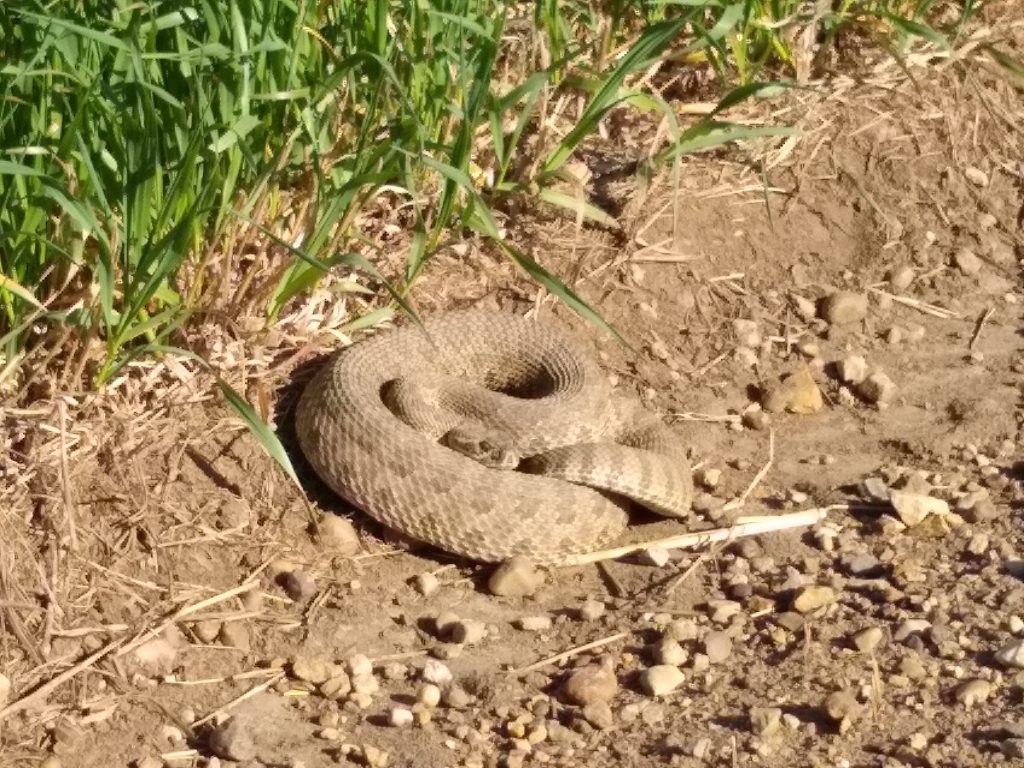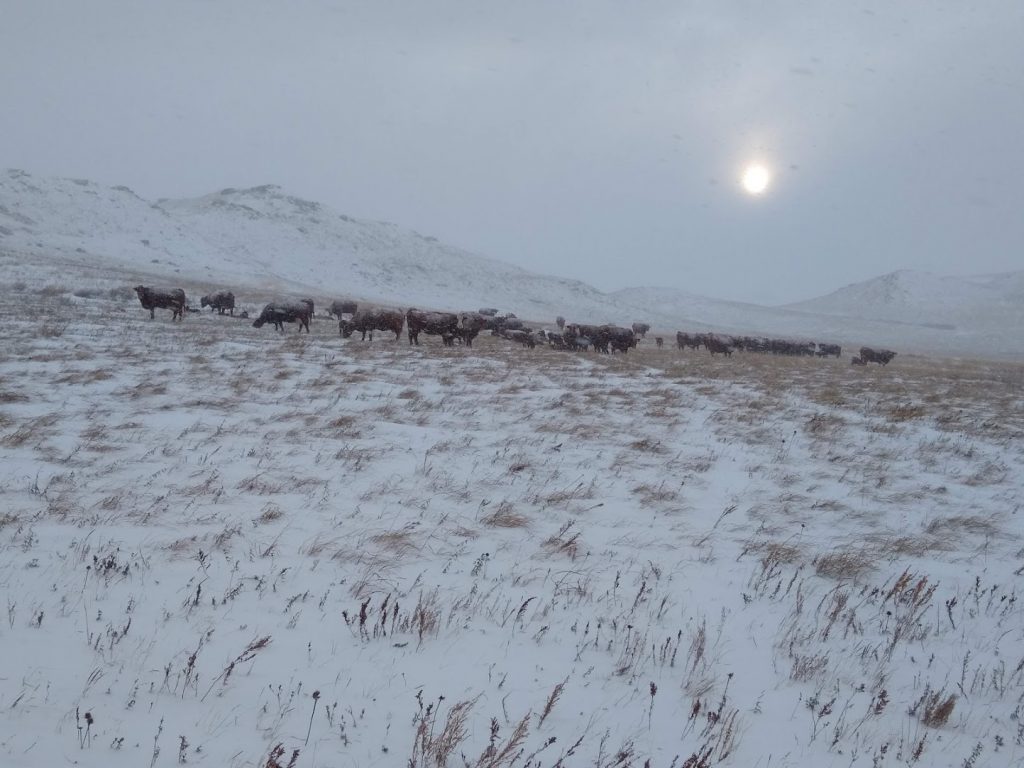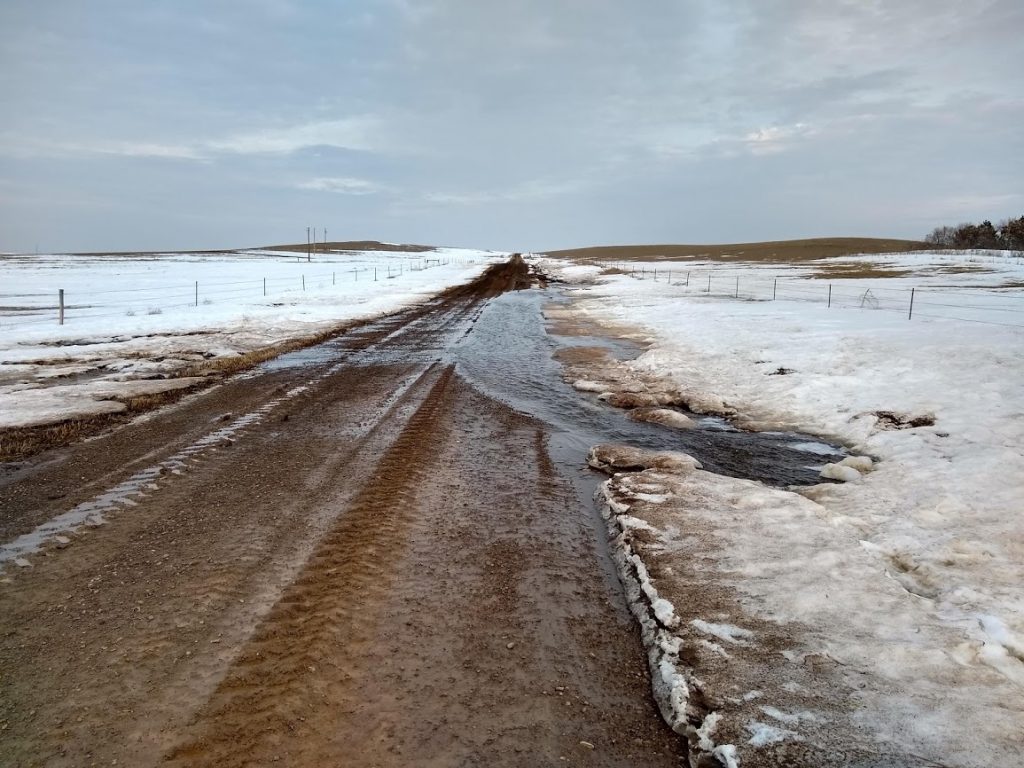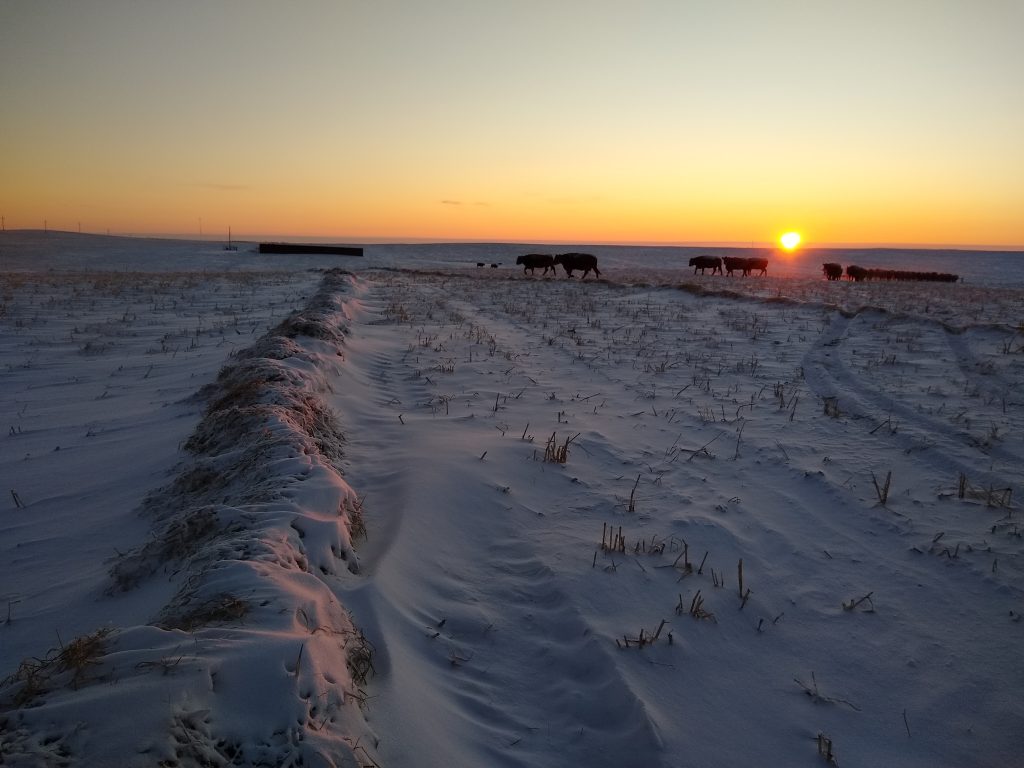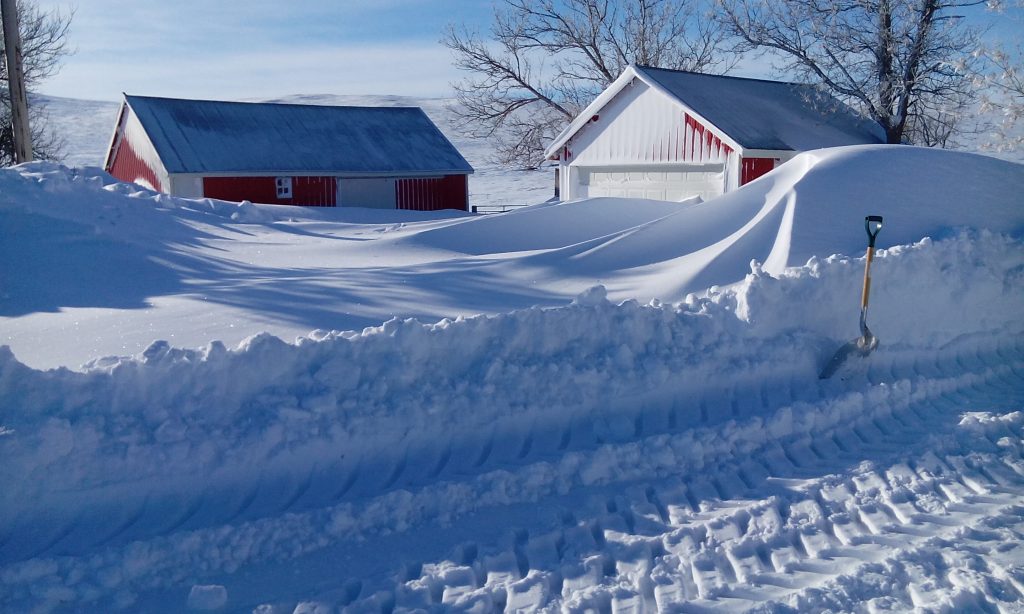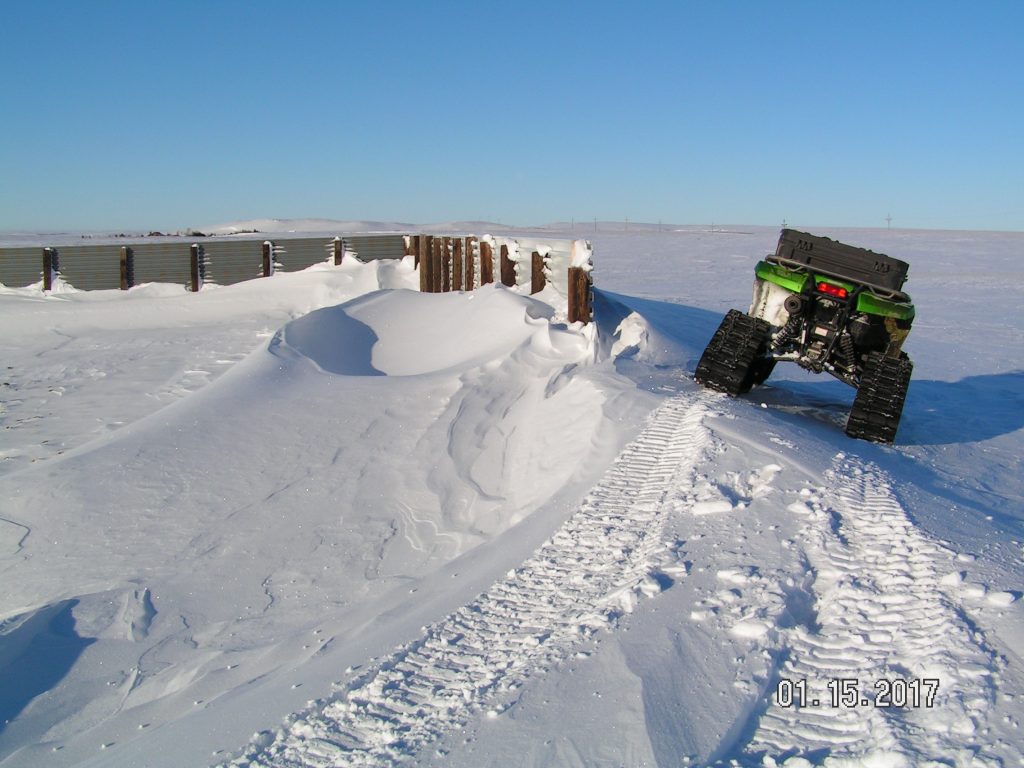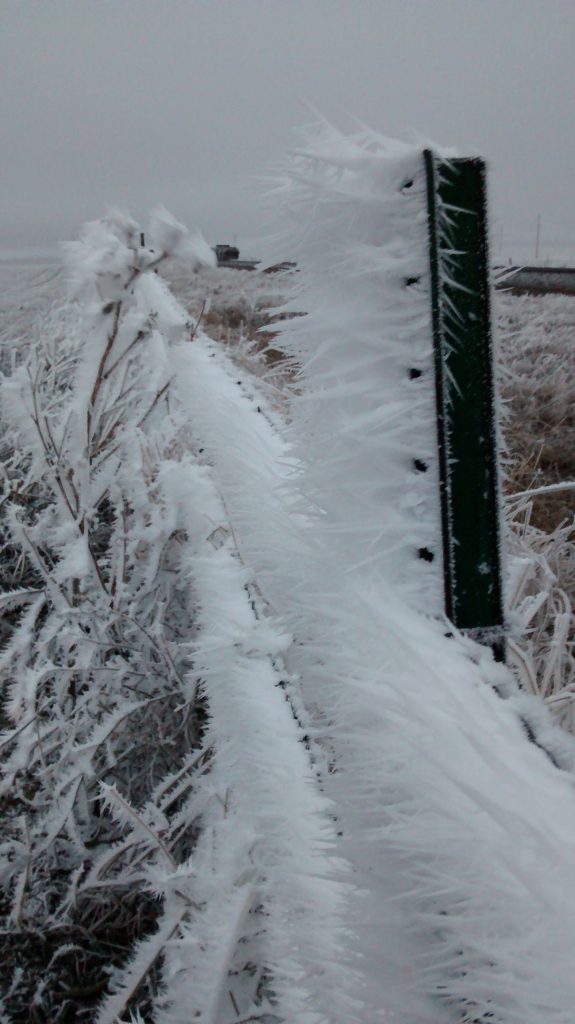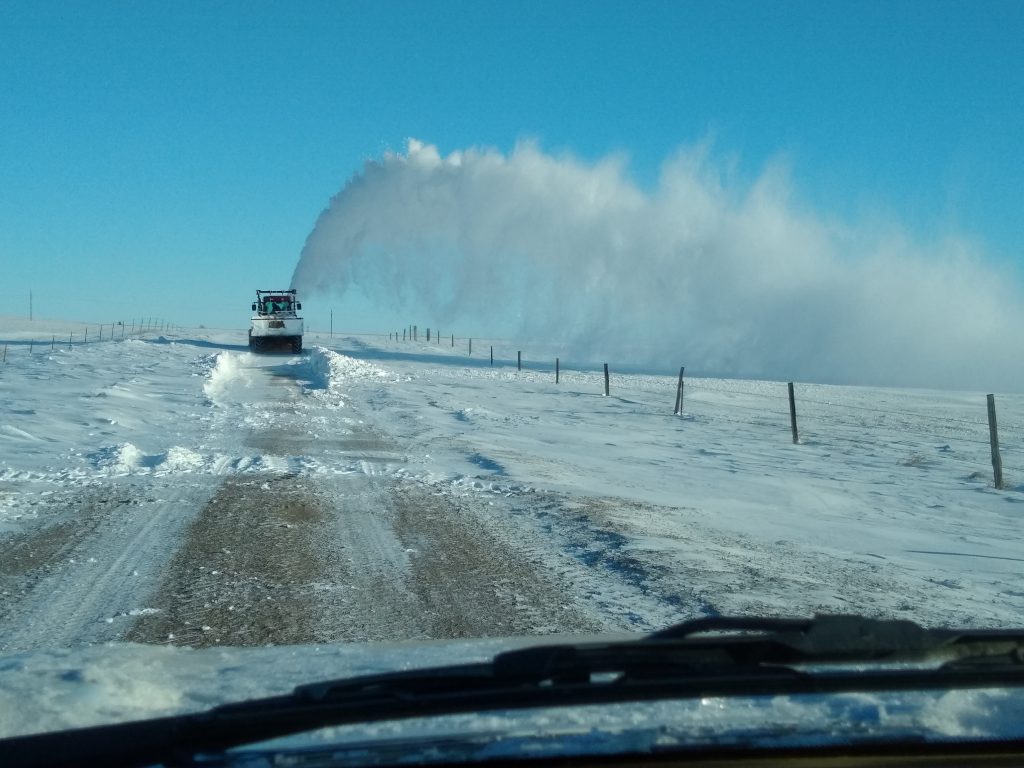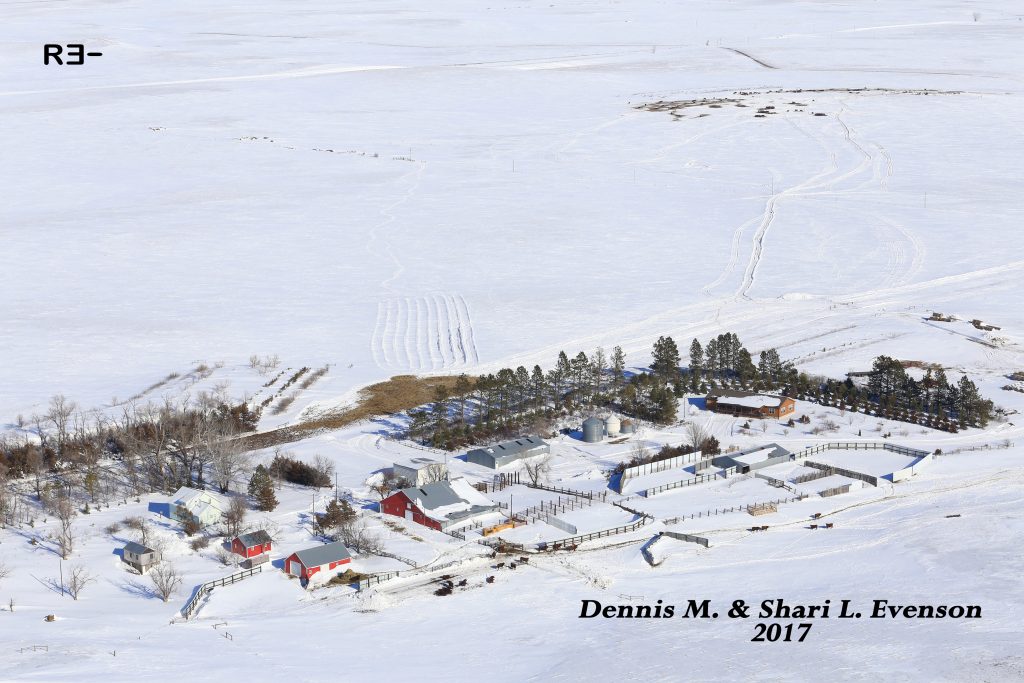Evenson Family
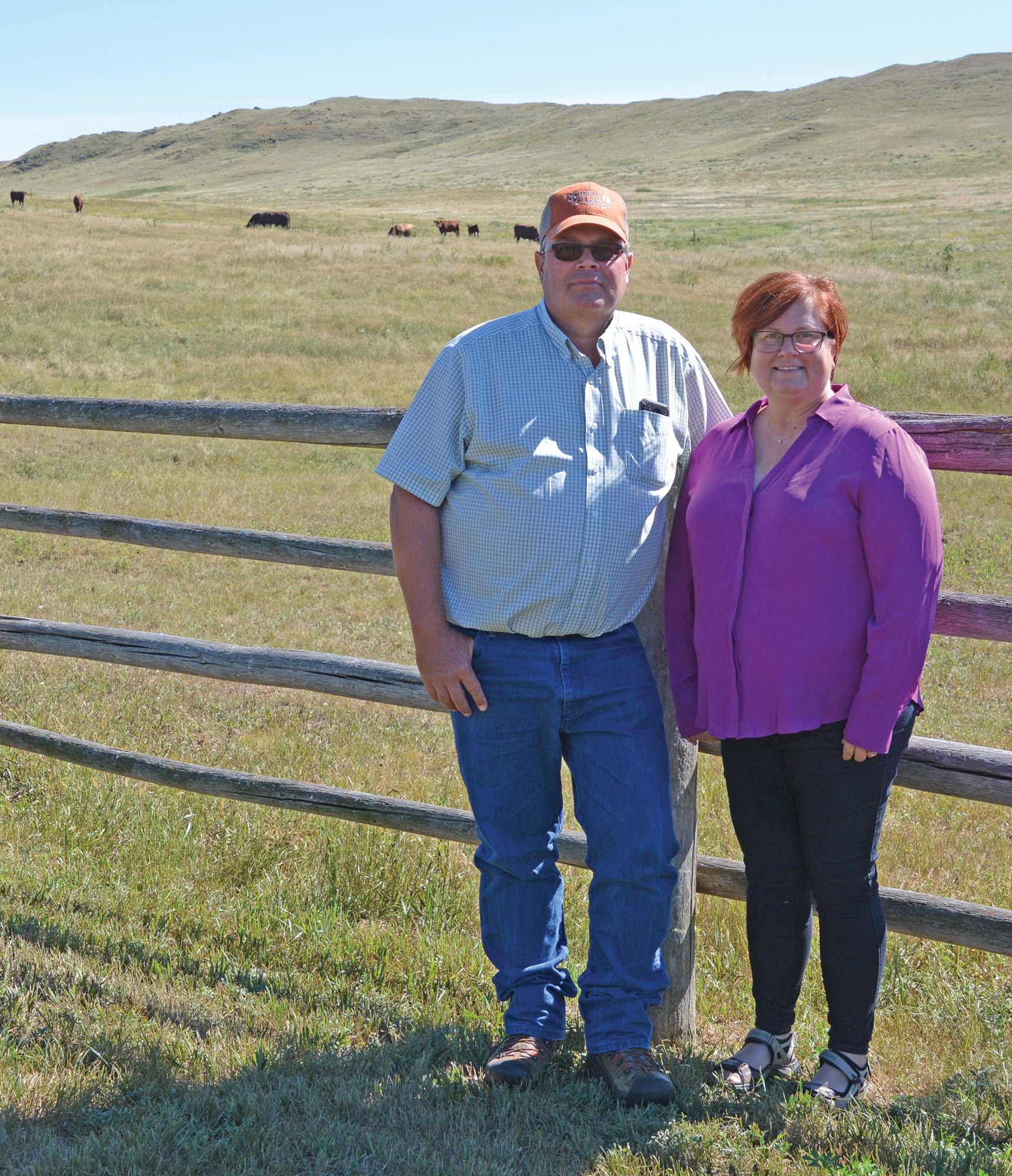
By Lura Roti for SDFU
Ask McIntosh ranchers Shari and Dennis Evenson about their off-ranch careers, and Dennis describes what they do as working in “national food security.”
“In a nutshell, keeping our working ag land healthy, is food security for our nation,” explains the second-generation rancher and Civil Engineering Technician for Natural Resources Conservation Service (NRCS). “Not only do we want to conserve it, we want to improve it so we can produce more food, grains, cattle – whatever.”
Dennis began working for NRCS in 1987. He had returned home to ranch with his parents, Ray and Eleanor, and needed an off-ranch income. “With only three or four places in town where you could work, NRCS was the one that made sense to me. Here I am 32 years later, and I still enjoy the work that I do.”
In his role, Dennis works with ranchers and other private landowners in Corson, Dewey, Ziebach and other western South Dakota counties. He designs, stakes and reviews NRCS projects.
“It doesn’t matter how many hundreds of miles around McIntosh, Dennis knows everyone,” says Shari, a third-generation rancher. She also has a fulltime off-ranch career. Shari is a certified public accountant and works as the County Executive Director for Farm Service Agency (FSA). In her role, she manages the administration of FSA programs to area farmers and ranchers.
“Because we also ranch fulltime, we can relate to the individuals we work with,” Shari explains. “We are living it, so we understand and can empathize.”
And because they also ranch fulltime, their days start early and run late. Calving ease is also a must on their herd genetics checklist. “We are working toward a more moderate size cow, real thick bodied and easy-keeping cow,” Dennis says.
Most of Dennis and Shari’s “vacation days” go to calving, haying and other ranch-related tasks. They both agree they wouldn’t have it any other way.
“I was the oldest of two girls growing up and I was always the one outside helping in the shop, with fencing, mowing the lawn or planting the garden. I was outside and I still like being outside,” Shari says.
Until 2001, the couple ranched with Dennis’ parents, leasing pasture and hay land and sharing labor. When his parents were ready to retire, Dennis and Shari bought the ranch and most of the equipment from them, contract-for-deed.
“Dad said once we signed the papers, it was a huge relief not having to pay bills and worry about the financial part,” Dennis says.
As part of the transition agreement, Dennis’ parents were able to live out their lives in their home on the ranch.
Dennis and Shari’s home is just across the yard from the home he grew up in. It is surrounded by nearly an acre of park-like gardens Shari designs and cares for. The many rock-bordered gardens feature a variety of trees, shrubs and native, blooming perennials. “My father-in-law always teased me, he picked rock and hauled them out of the pastures and put them in piles, and I drug it all back and used it,” Shari says. “I associate happiness with green trees and flowers. The color of the flowers in the summer makes me happy when some years everything else is drought brown.”
Along with drought-tolerant, native plants, Shari also decorates her beds with bird houses, park benches and artifacts from the ranch – wagon wheels, a dump rake, sickle mower, hand saws, cream cans and more. Ag artifacts also decorate the inside of their home.
“They are sentimental and mean something to us and our family, they represent something we do or have done,” she says.
Celebrating their ranch legacy, and passionate about its future sustainability, throughout the years, Shari and Dennis have worked tirelessly to enhance their rangeland.
They implement an intensive grazing rotation and working with NRCS programs, they have added cross fence, wind breaks and pipelines.
“More access to water allows us to create smaller pastures,” Dennis says.
He explains that when a larger group of cows are in a smaller pasture for a short duration, the increased hoof density and longer rest period improves the plant density and diversity.
It also forces cattle to graze everything, “They don’t spot graze as much,” Shari adds.
When it comes time to move them, Dennis says he simply gathers the salt and mineral tubs and calls them. “They are happy to move onto fresh grass.”
Dennis says he and Shari are continuing the tradition of conservation started by his parents.
“Back in the day when people summer fallowed because they didn’t know other methods, my dad saw fields blowing and worked to not let this happen,” Dennis says.
Instead, his dad planted trees and converted many acres of crop ground to hay acres.
In 2012, the Evenson family was recognized by the Society of Range Management for their conservation efforts with the Excellence in Grazing Management Award.
“The land is your biggest investment and you want it to be productive for the next generation.”
To view more photos of the Evensons and their ranch, visit www.sdfu.org, click on the SD Farm and Ranch Families link under the About Us tab.















